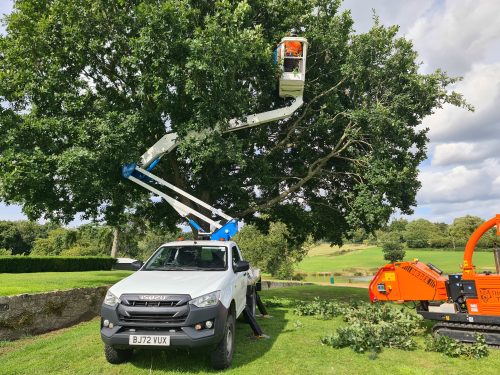 https://www.wilsontreesurgery.com/wp-content/uploads/2024/09/20230807_162313-500x375.jpg
https://www.wilsontreesurgery.com/wp-content/uploads/2024/09/20230807_162313-500x375.jpg
Machinery used in utility arboriculture
Read more
by Wilson Tree Surgery |
Trees in the UK undergo changes through each season. Summer is a particularly important time for trees, characterised by growth and increased activity. Here’s a quick look at what happens to trees during the warmest months.
In summer, trees experience rapid growth due to the abundance of sunlight and warmer temperatures. This period of growth is essential for trees as they expand their canopies and thicken their trunks. The process is driven by photosynthesis, where leaves convert sunlight into energy, fueling the tree’s development.
With the increased activity, trees require more water during summer. Roots absorb water from the soil, which is transported to the leaves where it evaporates through a process called transpiration. This not only helps cool the tree but also facilitates nutrient transport.
Summer also brings the risk of pests and diseases. Insects like aphids and beetles become more active, and the warm, humid conditions can encourage fungal growth. Regular inspections and early interventions are crucial to prevent and manage infestations.
Summer droughts can stress trees, making it important to water them adequately. Deep watering encourages roots to grow deeper, helping trees withstand dry conditions better. Mulching can also help retain soil moisture and regulate temperature.
Summer is a good time for light pruning to remove dead or damaged branches. However, it’s important not to over-prune, as this can expose the tree to sunscald. Proper summer maintenance helps maintain tree health and appearance.
Summer is a busy time for trees, full of growth and potential challenges. Understanding these seasonal changes can help you provide the right care to keep your trees healthy.
 https://www.wilsontreesurgery.com/wp-content/uploads/2024/09/20230807_162313-500x375.jpg
https://www.wilsontreesurgery.com/wp-content/uploads/2024/09/20230807_162313-500x375.jpg
Read more
 https://www.wilsontreesurgery.com/wp-content/uploads/2024/09/AdobeStock_475873508-500x333.jpeg
https://www.wilsontreesurgery.com/wp-content/uploads/2024/09/AdobeStock_475873508-500x333.jpeg
Read more
 https://www.wilsontreesurgery.com/wp-content/uploads/2024/09/pexels-valiphotos-589802-500x333.jpg
https://www.wilsontreesurgery.com/wp-content/uploads/2024/09/pexels-valiphotos-589802-500x333.jpg
Read more